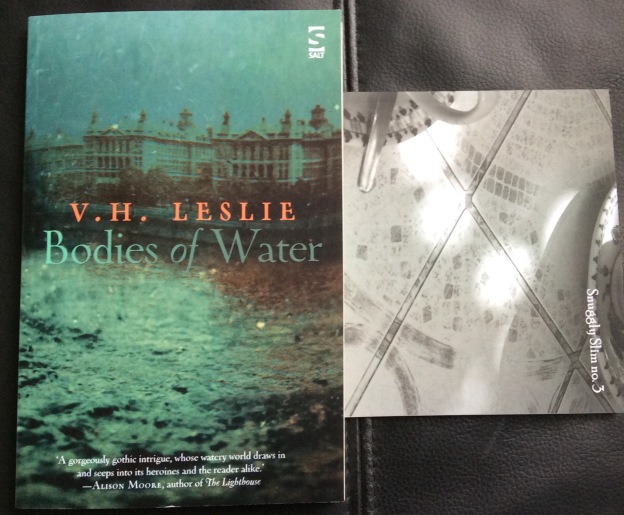Des Lewis will be 77 years old on 18 January 2025
Those who have read these episodic brainstorming reviews of mine must know they are very personal — rough-shod and spontaneous. Synchronicity and anagram mixed. I know they are not professional, never potentially publishable other than in the madness of my head, but I do hope they show grains of dark truth and cosmic panache.

These Des Lewis Gestalt Real-Time Reviews were founded in 2008.

‘What’s the loveliest word in the English language, officer? In the sound it makes in your mouth, in the shape it makes on the page? What do you think? Well now, I’ll tell you: E-L-B-O-W. Elbow.’ — THE SINGING DETECTIVE

“How shall a man find his way unless he lose it?” — Walter de la Mare

To any current genre author I have reviewed before — if you have a new story recently published or soon to be published in a collection or anthology, you may have a review by me of the story that also showcases where it is published. See HERE. (This is because I am no longer well enough to review as many books as I once did.)
Fresh Fictions, free to read HERE.
No AI input in preparation of my texts whatsoever.
THE NEW NONSCENIC
Photos here: https://conezero.wordpress.com/2024/02/24/d-f-lewis-recent-photos-1/


This being today’s note, it is addressed to everyone except the book’s author. The Dreamcatcher slow-motion book review below is, as ever, in fusion or symbiosis with a hyper-imaginative fiction. A NO SPOILER POLICY OPERATED THROUGHOUT. But on rare occasions real-time reviews can accidentally reveal too much and you may wish to read both this review and the book itself alongside me or read the book first.
1 & 2
“The water wasn’t able to meander by without being watched by the whole of London.”
An engaging start to this novel, with the onset of presumably tidal chapters – about Kirsten, during modern times, apprehensively taking on a flat, close to the Thames, in restored Wakewater Apartments, a building still showing its past grandeur and integrity – and about Evelyn in 1871 attending water treatment at Wakewater House.
A genuine sense of place and the building of the women’s characters, a lure from or towards water…
3 – 6
“The river is our moat, you see.”
Invisible stitches made visible by chapter numbers, as Kirsten sees she is not alone in restored Wakewater, and Evelyn’s era, when Wakewater was a water cure hospital, of Evelyn’s caring for Victorian fallen women as backstory to Kirsten’s modern womanhood, both women in turn with their own orientations of personal backstory as everyone carries their own overlapping backstories, overlapping with each other’s if time allows. And the text also speaks of the venereal men in both eras, Kirsten’s one called Lewis.. And all of this suffused with the complexity of water. Yes, complexity.
Here is a toast to the water in this book. I raise a glass of it to it. A simple story about such complexity. Or vice versa? The prose is simple enough, yet satisfying enough, too, at least for myself. Nicely done.
7 – 10
Things go ‘swimmingly” or books and papers are ‘spilt’ or a desk ‘floats’ among hoarded belongings, buildings occasionally seeping, but there is something far darker between and beneath these tidal portrayals of Kirsten and Evelyn, and other feminine contacts and mythic moments – and their eras. Water is a female domain, is said at one point, I recall. Bodies or their facsimiles flayed, too. I feel I must not flay too deep in this review myself, as I seem to be warned from doing so, almost by name? I find the sharply diffuse plot-thrust compelling. And a truly frightening moment ends this section of the novel, even more frightening than my perception of being warned off implicitly by the text itself.
11 – 14
“…as if the Thames had gushed from Wakewater’s taps unrefined.”
I feel as if the two eras are entering into each other via the two-way filter of this text, not only a flow of Gothicism but also of sapphics and hormones, womanly complaints, the nature of woman’s lot in each era, the glimpse of figures sinking into water, foul and pure, as if the actual yellow wallpaper of literature itself is mulched and diluted as part of this flow, flowing out through a sinkhole in different directions of the world’s slow spin, as if present and past are in two different hemispheres of existence. Some of this brainstorming stems from the text, some maybe not. And there is also a pet called Sahara…
15 – 18
“books incubating the secret knowledge”
As well as looking at the famous paintings mentioned in the text, do please listen to this wondrous aria –
19
‘Fallen women’, ‘kept women’, ‘reformed women’…
‘Rescued women’, ‘cured women’… Cured as in healed or embalmed?
And sinking or sunk ones, as glimpsed.
Or found drowned like ‘found’ art?
Water-listed, water-logged.
Green dress or Sprite.
A prescribed course in ignorance.
“Wakewater was strikingly near to the water, as if it were taunting the river, defying its authority.”
That, earlier.
Now the reader slowly spinning towards the the book’s own virtual outflow?
A wake is the opposite of a wake, if the funeral is held before the death itself?
20 – 23
“Evelyn sat down among the fallen apples.”
Eve and Evelyn alike?
Enabled by the literary theory of ‘The Intentional Fallacy’, the text itself contains – by also wrapping it up as part of the characterisation of the Victorian Water Clinic’s male doctor – a metaphorical hoard of surgical instruments so as to help me flense or hollow my way to the heart of this book…? Better, though, to do this to a book as object than to any person as subject.
24 – 27
“…she was conscious of walking on water,”
And, in the end, neither the heart of this book nor the nature of woman can possibly be reached, for to reach such ends would be to destroy them. The book’s ramifications shimmer on – frightful and transcendent in tidal irresistibilities.

And, for me, from Wakewater to Waterhouse:
A painting that my wife and I had for a few years on our sitting-room wall in our earlier married days.
“All waters eventually merge;”
Cross-referenced this story here: https://dflewisreviews.wordpress.com/2016/06/06/singing-with-all-my-skin-bone/#comment-7311